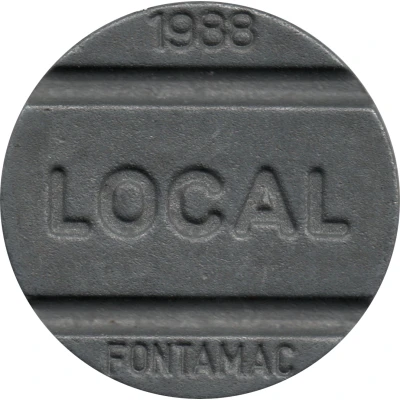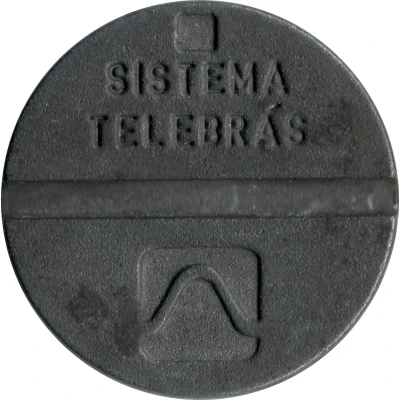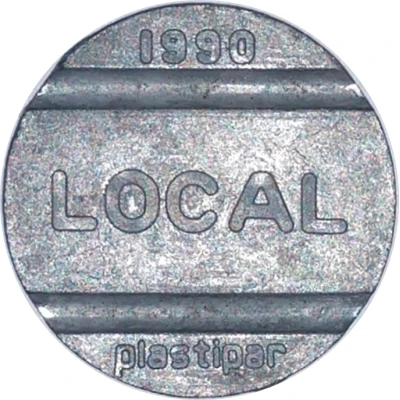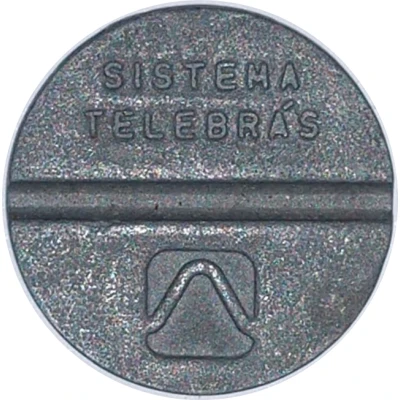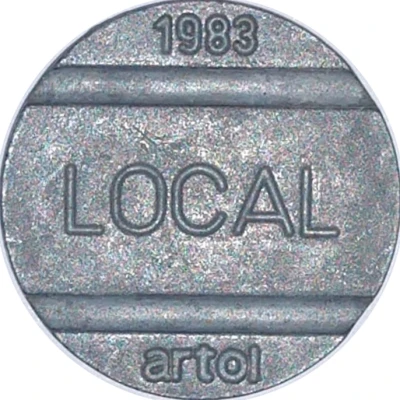
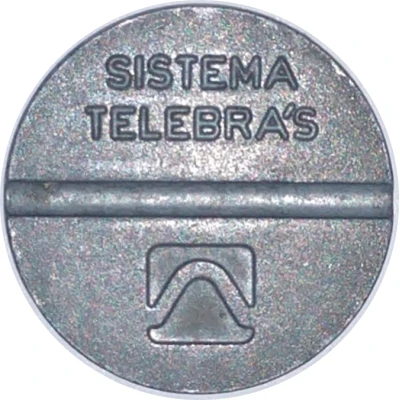

© Wilson Roberto Vasques Nunes
Telephone Token - Telebrás Local call - Artol
| Zamak | 4.4 g | 23 mm |
| Location | Brazil |
|---|---|
| Type | Service tokens › Telecommunication tokens |
| Years | 1982-1983 |
| Composition | Zamak |
| Weight | 4.4 g |
| Diameter | 23 mm |
| Thickness | 1.9 mm |
| Shape | Round with groove(s) |
| Technique | Milled |
| Orientation | Medal alignment ↑↑ |
| Demonetized | 1986 |
| Updated | 2024-11-13 |
| Numista | N#139453 |
|---|---|
| Rarity index | 56% |
Reverse
Horizontal groove in the center. Above the groove the words SISTEMA TELEBRÁS. Below the groove is the logo of the Telebrás System, formed by a square with the peak of a sine wave in the center.
Script: Latin
Lettering:
SISTEMA
TELEBRÁS
Translation:
TELEBRÁS
SYSTEM
Edge
Plain
Comment
Phone jacks are jacks used to make public phone calls.They appeared in Brazil in the 60's. Their diameter ranged from 20 mm to 30 mm and were made of iron, brass, copper, zamac, among others. They carried the name of their company and region on the reverse and each of them worked on a specific type of public telephone. Due to this problem, in 1970, CTB made the tokens have a unique pattern for each service area. The following year two different types of tokens were established for the whole Brazilian territory: those of long-distance calls that only operated on blue public telephones, and those of local calls that operated only on red public telephones.
In mid-1992, due to the high costs for maintenance, collection of the tokens in the telephones and also the vandalism, the company Telebrás next to its research center instituted the use of the famous Calling Cards. This greatly reduced the costs of maintenance and repair of the devices and provided greater convenience to service users. Five years later, on July 16, 1997, the General Telecommunications Law (Law No. 9472) was instituted, which was a plan to expand and modernize the public telephone system in Brazil, a fact that occurred one year before the privatization of Telebrás. With that the old tokens became obsolete and were taken from the streets, becoming hence the object of fans and collectors.
This type of plug was used for local calls, used in public phones, initially, red, installed in open booths with ear format, popularly called "big ear".
There were also public telephones, installed in private commercial establishments.
Reverse of date 1982 (12)
